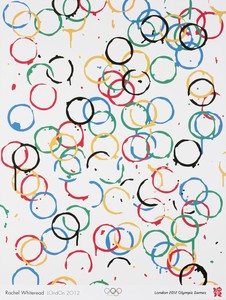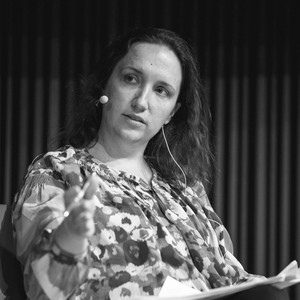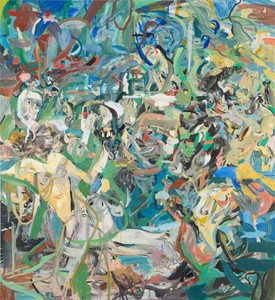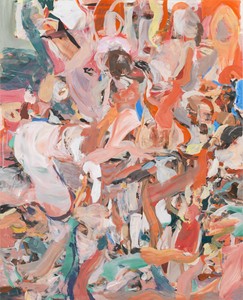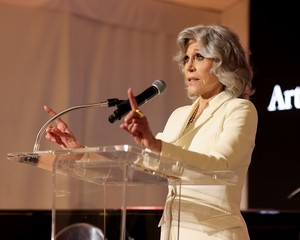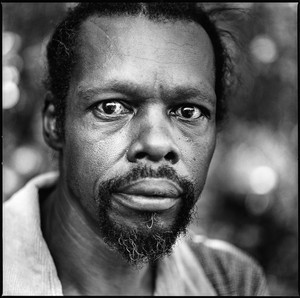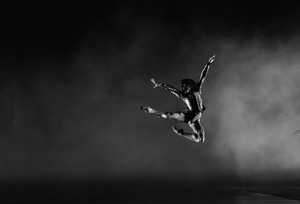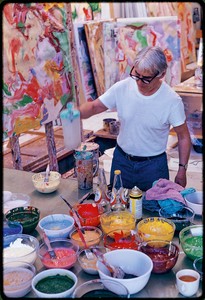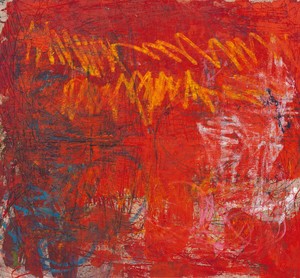Alison McDonald When did you first encounter the work of Cecily Brown? What resonated for you—or what events occurred—that led you to invite an exhibition of her work at Galleria d’Arte Moderna (GAM), Turin?
Danilo EccherI met Cecily Brown in the early 2000s with Ealan Wingate, who took me to her first studio in Manhattan. I was immediately surprised by her work and fascinated by her energy, and I decided to show some of her works in a small but precious exhibition at the MACRO in Rome, where I was director at that time. I have always considered that first encounter very important, and I have never stopped following Cecily’s work. Now we have an opportunity to present to the Italian public a major show of her works and to publish a great catalogue.
AMCDGAM has a rich history that dates back to 1863, a collection of more than 45,000 works, and a commitment to hosting contemporary exhibitions. The mission of the museum includes “weaving a continuous exchange between its own historical works and today’s cultural debate, and setting a close relationship for its exhibition program between contemporary and historical collections.” How does this exhibition further that legacy?
DEGAM was the first museum in Italy to focus on the relationship between historical works and contemporary works. I have always thought of art as a river, a big continuous flow impossible to contain or to restrict within limits. This is why I like to treat even the experimental and contemporary exhibitions as I would treat the more historical ones. I believe that Cecily Brown’s work, by its own nature—with the historical intersections, the references, the culture, and the education that it constantly documents—is an example of this same approach.
AMCDAre there any dialogues between the works that are shown and the museum’s permanent collection that are of particular interest for you? Are there any connections that you hope the public will make?
DEReal connections stimulate curiosity and the intellect. In our collection, for example, Cy Twombly’s Untitled (Rome, The Wall) from 1962 is displayed in the same room as Mario Merz’s Igloo from 1969, and a Picasso from 1948 stands in front of a work by Jannis Kounellis dated about twenty years later. I had invited Cecily to display one of her works outside of the exhibition space, within the museum’s permanent collection, in front of a Fontana.
AMCDThere is an apparent abundance to your installation, which amplifies the tension and energy already prevalent in the paintings themselves. Please elaborate on the motivation behind this idea.
DEFor many years we have been used to cold and rarefied installations, which with the passing of time have lost their sense of reflection and assumed a merely decorative value. A big empty wall with only one small painting—that is the attitude. For the works of Cecily Brown, I was interested in having the visitor not just see a single work but enter physically into the painting, almost breathing it in and touching it, feeling deeply immersed in Cecily’s colors, marks, and figures. I wanted the show to be not a simple exhibition but a lived, narrative experience.
AMCDThe paintings included in your exhibition, and Cecily Brown’s paintings in general, encompass a wide range of sources that include newspapers, children’s books, and old masters. There is no hierarchy among her sources. James Lawrence has written, “We get the sensation. We also get the glimpses of history as they flow in and out, whether through direct recognition of an image or through indistinct echoes of something familiar.” How would you describe—or how does your exhibition frame—the abstract narratives that Cecily Brown creates?
DEBesides the many art-historical references, Cecily Brown’s work nourishes itself with up-to-date reality and is immersed in the social-network era. These communication media allow the spread of images beyond a precise time and without any hierarchical order, mixing up different cultural fields, epochs, styles, and suggestions. Cecily Brown’s works are deeply rooted in the painting tradition but enhance themselves with this rapid dissemination of information, with this varied and widely shared imagery.
AMCD The works you have selected for inclusion document the artist’s practice from 1999 to 2014. Boy Trouble, one work from 1999, depicts a scene that is definitively sexual. How would you describe the impact of sensual and sexual imagery within her oeuvre and the way this type of imagery, and its reception, has shaped her practice?
DEThe erotic, sensual, and sexual content in Cecily Brown works has been widely discussed and documented by critics in the past. All the same, I would not associate her art with a genre that superficially tries to provoke and scandalize, like many contemporary artistic endeavors. Cecily Brown’s work confronts a variety of content with deep insight into the surrounding reality and through an intimate meditation, a psychological and introspective attitude toward the human soul. If we recognize a biographical element, however, it is not narrative but represents a glint, a pretext.
AMCDKlaus Kertess has written, “Cecily Brown’s paintings swing precariously from improvisation to more conscious control, from abstraction to figuration—avoiding closure, reveling in ability and surprise.” He has also written, “I had been looking at an abstraction and a figurative painting that had neither narrative nor visual coherence. What was it to be labeled? Figtraction? Abfiguration? Neither, of course, would do.” How would you define the push and pull between control and improvisation as well as abstraction and figuration that energizes these paintings?
DE Cecily Brown’s paintings are a continuous stream of color and forms that accumulate and expand on the canvas in changing, multiple layers of influence. Staring at her paintings is like leaning out over an orchestra pit, where cultural and historical references are like musical instruments mixing their notes.
AMCDThere are quite a few works on paper (more than thirty) included in the exhibition. How do these works on paper complement the paintings? What do they add to the presentation?
DEI wanted to select a conspicuous corpus of works on paper that show the richness of the techniques she uses, as she skillfully incorporates watercolor, gouache, drawings, and monotype in her artwork. Through these works on paper it becomes clear that the variation, fluctuation, and fluidity of the images that evolve are continuously analyzing a few themes also recurrent in her paintings. The quick gesture of drawing, characteristic of sketches, has both a reflective and a meditative quality—an intuitive and impulsive immediacy, almost unconscious, that characterizes Cecily Brown’s entire body of work. In her drawings the quick and instinctive approach emerges more clearly compared with the paintings, where it is mediated by the literary construction, the time of execution, and the conceptual substance.
AMCDIs there anything unique about your installation that you feel responds to, or heightens, the viewer’s experience of the paintings?
DEIn every show, each curator intends to present his own critical thinking, a personal view about one or more artistic endeavors. A show is built as a subtle game, or balance, between the desire of the curator to let his point of view on the work emerge and the artist’s needs. If this relationship is fruitful, the show is successful and it is able to arouse curiosity in the public—as I think Cecily Brown’s show will do, arouse this curiosity.
